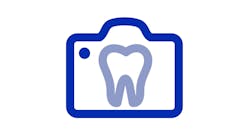Most dentists have a preoccupation with the technical aspects of their professional day and an aversion to the daily management of the business. That’s easily explained; you are highly trained in clinical matters, and probably very much less trained in dental insurance and other financial matters. So you delegate the front-desk problems. Stephen Covey taught us that delegating without training is really just dumping. Statistics from the dental insurance industry show that dentists are losing tons of money by ignoring the issue. Evaluations (you may still be using the term “exams”), serve as a perfect example. They are paid at 100 percent, yet statistically you are still undercharging for those services. Worse still, many doctors don’t even charge a fee for many of the evaluations they perform.
Quick quiz
Write directly on this page the average number of times per day you use each of the following codes: D0110, D0120, D0130, D0140, D0150, D0160, D0170, and D0180. How did you do?
Here’s some things you should know about each of the above codes:
• D0110 - What was termed an initial exam is no longer a valid code and isn’t payable at all.
• D0120 - This code is so old that it’s still called a periodic “exam,” while the others are now “evaluations.”
• D0130 - This is a trick question. It doesn’t exist in the current nomenclature.
• D0140 - Limited Oral Evaluation, Problem-focused: it could be used very often every day.
• D0150 - Comprehensive Oral Evaluation, New/established patient, is a very usable code.
• D0160 - Detailed and Extensive Evaluation, Problem-focused, by report.
• D0170 - Reevaluation, Limited, Problem-focused, should be used several times a day in hygiene.
• D0180 - Comprehensive Periodontal Evaluation, New/established patient, is perhaps the most underused code of all. I’ll show you later on in this article why this might be the most important code on the list.
How many of these codes are actually new to you -that is, you didn’t even know that they existed? My training experience tells me that more than one of them is completely new to you.
Now go back and repeat the process, this time recording your average fee for each of these codes. Remember, insurance pays 100 percent of the UCR on these codes. By now, the problem should be clear.
So, let’s solve the problem. Actually, there are at least two problems, aren’t there? Which code to use when and what fee is appropriate for each situation?
Before the discomfort gets too extreme for you - and you decide to delegate this article to the front-desk staff - let me add that the proper diagnosis is based on your evaluations. I might also mention the proper diagnosis is becoming a matter of litigation on a daily basis. Many dentists are losing their license because of a missed or nondiagnosed problem. They are being sued because of the liability associated with the nondiagnosis of dental diseases today. Here’s a current example: systemic problems, including diabetes and cardiovascular diseases, are directly impacted by concurrent periodontal diseases and their treatment. If the patient is diabetic and you fail to recognize that in conjunction with his or her hygiene/perio therapy, that could be grounds for serious litigation. Likewise, if one of your patients should experience a CV accident the same week you treated that person in hygiene/perio, your records probably will be reviewed. Therefore, an evaluation leading to a proper diagnosis is perhaps the single most critical procedure that you perform daily from a medical, legal, and financial standpoint. Insurance industry statistics show that many of you don’t even charge as much as the insurance policy is willing to pay. You can’t delegate this one!
So, welcome back. Let’s begin with the nomenclature:
• What is an evaluation?
• How is it different from an exam?
• Are we following the medical model? Why?
• Why don’t we have enough codes to describe the situation?
• Does the nomenclature imply a specific diagnosis?
• What diagnostic codes do I use in dentistry?
• Are diagnostic codes required for documentation?
• When do we get to the money part?
No worries, mate, I’ll make this as painless as possible.
A peek at medical-evaluation coding
Coding a medical insurance claim involves several steps. The codes for place of service range from 01 to 99. There are six physical status modifiers - P1 through P6. These codes describe how sick the patient is. There are books on how to code “Evaluation and Management” or what we call “exams.” E&M code numbers range from 99201 through 99499. Important to this discussion is the fact that there are separate and distinct codes for new patients, patients-of-record, patients seen on an emergency basis only, and patients seen for consultation only. Hint: The fees are different for each of these conditions or combinations of conditions. In dentistry, we have a half-dozen codes for which most dentists incorrectly think they have to have the same fee, and for which a majority of dentists are actually charging less than the insurance policy would pay.
This introduces the concept taught to me and many others by Dr. L. D. Pankey: If the procedure is different, with different levels of care, skill, and judgment, then the fee should be different. If dentistry had more codes, dentists would be more likely to assign more (i.e., different) fees for the evaluation codes. The lack of a proper number of codes has led dentists to significantly undercharge for the few codes dentistry does have. You must seriously consider changing this in your office. It is fair to charge patients different fees for the same code, since the care, skill, and judgment involved is different. It also is legal, moral, and ethical.
An evaluation is composed of a:
1) History
2) Examination
3) Medical decision-making (sinus problem or endo problem)
4) Counseling
5) Coordination of care
6) Nature of presenting problem
7) Time
With that many variables involved, it seems obvious that the fee will vary and it will not be insignificant. The amount of time required for each step is usually very different for a new patient compared to a patient-of record. Dentistry needs two separate codes at each level, as medicine has. Until then, you might want to consider the difference in time and expertise involved for each procedure.
Standard of care and focus
Sticking to evaluations - and not even thinking about actual therapy - is critical for practicing dentists to recognize that the standard of care for the GP is the same as the standard for the specialist. In court and before the state board of dentistry, you are legally responsible to diagnose any and all existing disease. You must record that diagnosis. If it is not recorded, you didn’t make a diagnosis in the legal sense. It is malpractice to miss or ignore cancer in the mouth, periodontal disease around the first and second molars, an apical lesion, etc. If you see a patient for an endodontic emergency only and miss the oral cancer, are you still liable? Of course you are! So, the idea of focus becomes important, doesn’t it? Problem-focused could be a problem. If your focus is limited strictly to the chief complaint, and you ignore another significant problem without making at least a notation in your records, you might be the focus of the next problem.
In light of all this, let’s look at a few of the evaluation codes and limit our scope to hygiene/perio situations since they are the most common.
Code D0140 - Limited Oral Evaluation,
Problem-focused
History: Usually this is a brief history, as in an update to the previous history or a short history of the current emergency.
Examination: This examination is certainly problem-focused; however, not to the exclusion of items demanded by the standard of care.
Medical decision-making: Again, usually focused, or a different code should be employed.
Counseling: This is often overlooked in hygiene. D1330 is an important CYA code that is seldom used. This code can be used for a recall exam.
Nature of presenting problem: If I ask an audience “why” they “recall” patients, the idea that they are monitoring periodontal disease is foreign to most.
Time: The time here is less than a comprehensive exam, but not unimportant.
The “takeaway” here is that D0140 is very descriptive of a “recall exam.” Since it is a newer code, the UCR tends to be higher than the D0120. You have just been reminded that your fees are too low - i.e., below UCR even - and that your liability is high. Seems like the perfect time to start using the D0140 code with a higher (variable?) fee.
Code D0170 Reevaluation, Limited,
Problem-focused
History: Usually this is a brief history, as in an update to the previous history or a short history of the current emergency.
Examination: This examination is certainly problem-focused; however, not to the exclusion of items demanded by the standard of care.
Medical decision-making: This is the best code to use after root planing, when you bring patients in to evaluate their progress and determine if you need to place local antibiotics or alter their home-care regime.
Counseling: This is often overlooked in hygiene. D1330 is an important CYA code that is seldom used. This code can be used for a recall exam.
Nature of presenting problem: If I ask an audience “why” they “recall” patients, the idea that they are monitoring periodontal disease is foreign to most.
Time: The time involved here is less than for a comprehensive exam, but not unimportant.
D0170 is a reevaluation. That’s different from an evaluation. This is a follow-up exam. You spend your time, care, skill, and judgment evaluating the patients’ progress following a prescribed therapy. Isn’t it clear that this code needs to be used frequently?
Code D0180 - Comprehensive Periodontal
Evaluation, New/established patient
This code was created, in part, to give periodontists an exam/evaluation code. Since GPs are held to the same standard of care - and since a complete periodontal exam for all patients is now mandatory - then this code becomes a functional code for medical, legal, ethical, and financial reasons for the GP dentist as well. Note that this includes new patients. This could be your “new patient” exam.
Does a comprehensive periodontal evaluation include examination and evaluation of existing restorations? Of course! How about evaluation of the oral soft tissue? Of course it does! The point is that a complete perio exam includes everything that a new-patient exam includes.
Code D0180 - Comprehensive Periodontal
Evaluation - New/established patient
History: Comprehensive, both past history and current, systemic and local.
Examination: Comprehensive - that says it!
Medical decision-making: Comprehensive.
Counseling: Comprehensive.
Nature of presenting problem: Comprehensive.
Time: This includes a lot of face-to-face time for the doctor, especially when compared to other evaluations.
By now, it should be very obvious that your “exam” fees need to be reconsidered. Here is a simple test. If you submitted an exam fee to the insurance carrier - and the insurer paid you 100 percent of the charged fee - what do you now know about your fee? You know that your fee is lower than the UCR! That is, it is lower than your neighbors are charging and lower than the policy allowance. I am not advocating that you charge more simply because you can. I am proclaiming - loudly - that you need to be paid appropriately for your care, skill, judgment, and time. At least charge enough so you can maintain your liability insurance policy.
Call to action
The lack of appropriate codes, understanding the current codes, direct involvement of the doctor in daily coding, and the pressing problems have all combined to cause dentists to lose a very significant amount of money. The worst part is that your patients have paid their insurance premiums, they have paid for the coverage, and your office may be undercharging or even not charging for critical services rendered. These are procedures that are paid at 100 percent, with no out-of-pocket expense to the patient. The patients have paid the premium, you’ve provided the service, and the money is left sitting at the insurance company, only to become more profit for the carrier.
So, here’s the call to action. Discuss the importance of the evaluations that your office does with the entire staff. Raise your fees immediately to the UCR level, at the very least. Consider a variable fee schedule. Remember, it is fair to charge people different amounts for the same code because we don’t have enough differentiating codes. Take action today!
Dell Webb, DDS, is the director of the Udell Webb Leadership Institute, and is a noted consultant and lecturer on dental insurance, case acceptance, and profitability. The information in this article is for general informational purposes only. It represents the assessments and opinions of the Udell Webb Leadership Institute - not Dental Economics® - based upon the experience, research, evaluation, and assumptions of the institute.







